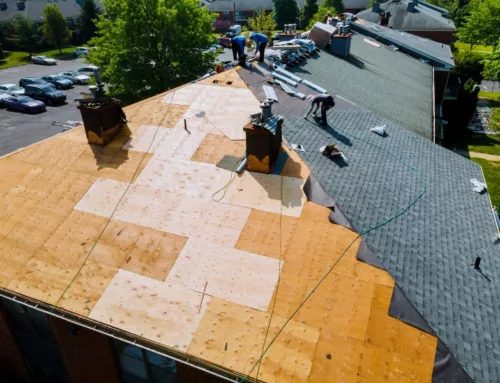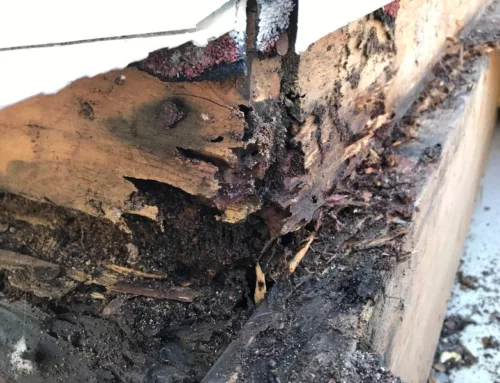What Is the Siding Installation Process?
Has your home seen better days? When cracks begin to appear on your house’s exterior, it may be time to consider repairs. If you can make a list of the signs that your home needs new siding and you check off more than half, it’s time to call professional contractors. But what is the siding installation process? Do you have time for a major home renovation project?
The fastest and safest way to ensure your home gets the siding reinstallation it needs is to talk to installers in your area. This is one of those remodeling projects you shouldn’t try to DIY unless you’re an experienced contractor or are working with one.
Know the Timeframe of Your Installation
While professionals are reinstalling new siding on your home, you may need to make slight alternations to your lifestyle, including a possible temporary relocation. The size of your house will determine the length of time it takes to install new siding. Most projects take about two weeks, though it may take longer if your siding requires paint or if your home has extra levels. Discuss the timeline with your contractor, as these factors may also affect the price.
Prepare the Exterior of Your House
Clear everything you possibly can from the perimeter of your home, so installers have room to work on your house. Tie back trees and shrubs to give contractors room to reach each section. Further, you should remove lawn equipment, tools, and other items from your yard so that contractors don’t trip over them. For their safety and that of the installers, keep your pets and children indoors during installation. Finally, park your vehicles at the end of your property in case a tool or piece of siding falls. It’s less likely to damage your car if it isn’t near the house.
Consider finding something to do on weekends while the project is taking place. Rather than listen to contractors making noise outside, make plans with friends and family during the time they’ll be at your house. Typically, workers arrive in the morning and don’t stay past sunset (or five o’clock).
Secure Interior Items Inside Your House
Your home may shake during a siding installation. To prevent anything from breaking, you should secure knick-knacks and other unstable items that you keep on shelves. Consider removing these items during the timeframe of your installation to ensure they don’t fall and break. Further, check your kitchen cabinets for fragile glasses that may topple over if your home rumbles too much.
Meet the Installers Before They Begin
Be present at your house when you schedule your contractors to arrive. Mistakes may arise if you allow a team to begin work without talking to them first. They may install the wrong siding or negate a custom request you ordered. Further, you should also be present when they finish the job, so you can inspect the work and sign off if everything looks right.
Materials Delivered to Your Home
Before contractors begin installing, they will deliver items to your home. Siding materials usually arrive a few days before the start of the project. Clear your yard at least a week in advance so that there is room for all the supplies. Contractors or delivery trucks will bring large boxes of siding panels to your home. You’ll either keep them in your yard or garage.
Removal of Existing Siding
Installers must first remove the old siding to reinstall the new siding. Contractors use a special tool to rip the siding and nails off the house. Siding removed from the home is garbage and eventually goes into a dumpster to be hauled away.
Prep House for New Siding
Inspect the Walls
Once they remove the siding, professional contractors will inspect the walls to make sure there’s no more serious damage. Types of damage they look for include pests, holes, and signs of dry rot. They may need to take additional steps to solve these issues if they arise.
Weather Stripping
Installers will cover your home with a layer of large yet thin plastic to keep it dry. Weather stripping is necessary between your home and its siding. This layer also prepares the wall for the final steps.
Flash Corners
As additional protection against water, contractors flash inside and outside corners and sill areas. Flashing is an additional piece of durable paneling that protects your home and siding. Though you won’t see these details, they improve the quality of your home and its siding.
Add Insulation
When contractors remove the old siding from your home, they remove the old insulation as well. Good contractors will add new insulation to your house that makes sense for the type of siding you’re using. The most common is foam insulation. It’s best for noise reduction, thermal resistance, and pest control. It also works with most types of siding, including fiber-cement.
Hang New Siding
To protect your home and everything in it from weather and more, contractors will install new siding over the prepared walls and insulation. The method and time needed to hang the panels will depend on the type of siding you choose. If your siding needs paint, the project may take a few extra days.
Professional Cleanup
Professional installers know how to clean up after an installation. They will bring dumpsters for any leftover materials they pulled from your house. They use magnetic tools to pick up nails in the yard and clean up the dust that may have settled around your property. Contractors are responsible for removing these materials and any other tools and scraps from your home.
Knowing what the siding installation process is like may help you decide when to schedule your appointment. Though you’ll want to be home when contractors begin their work, you may not want to spend the entire day in your house as they bang away and rattle your home. Consider taking your pets and children to a neighbor’s house, your parents’ home, or on a day trip to avoid the construction. Further, work with local contractors who know your area; they will recommend the best materials for your home. You get the best Portland siding installation services when you work with Sister Siding.






